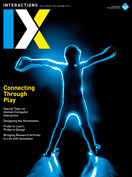Authors:
Cindy Kao, Paul Johns, Asta Roseway, Mary Czerwinski, Lahiru Priyadarshana, Victoria Porter, Juan Carrascal, Aaron Visser, Roel Vertegaal, Sarah Homewood, Gillian Smith, April Grow, Chenxi Liu, Lea Albaugh, Jennifer Mankoff, Jim McCann
Tattio is a fabrication process that draws from current body-decoration processes (e.g., jewelry-like metallic temporary tattoos) for the creation of on-skin technology. The fabrication process generates functional components such as NFC tags, circuitry, and thermochromic tattoos, while maintaining the aesthetics and user experience of existing metallic temporary tattoos. The fabrication process is low cost, accessible, and customizable; we seek to enable individuals to design, make, and wear their own skin-technology creations.
https://vimeo.com/cindykao/tattio
Kao, H.-L. C., Johns, P., Roseway, A., and Czerwinski, M., Tattio: Fabrication of aesthetic and functional temporary tattoos. Proc. of the 2016 CHI Conference Extended Abstracts on Human Factors in Computing Systems. ACM, New York, 2016, 3699–3702.
Cindy Hsin-Liu Kao, MIT Media Lab
[email protected]
Paul Johns, Microsoft Research
[email protected]
Asta Roseway, Microsoft Research
[email protected]
Mary Czerwinski, Microsoft Research
[email protected]
 |
Tattio allows users to create their own on-skin technology designs. |
MagicWand is a handheld cylindrical display object. It features two flexible OLED screens that provide a continuous display surface covering most of its lateral area. Its shape and size allow it to be used as a wand, offering rich gestural interaction. We used MagicWand in a gaming scenario to explore how its form factor affords different actions from those of a traditional smartphone. As a game controller, MagicWand can display different tools and characters, depending on the context. Its physical and visual affordances make it easier for the player to discover the right gestures for advancing through the game.
http://www.dropbox.com/s/rvly3jvvfg2scoc/MagicWand.mp4?dl=0
Priyadarshana, L-L., Porter, V., Carrascal, J-P., Visser, A., Vertegaal, R. MagicWand: Exploring physical affordances with a handheld cylindrical display object. Proc. of the 2016 CHI Conference Extended Abstracts on Human Factors in Computing Systems. ACM, New York, 2016, 3762–3765.
Lahiru Lakmal Priyadarshana, Victoria Porter, Juan Pablo Carrascal, Aaron Visser, and Roel Vertegaal, Human Media Lab, Queen's University
[email protected]
 |
IMU data is used to orient graphics on the device toward the user to provide the illusion of 3D-motion parallax. |
 3. Maintaining Relationships with Our Devices
3. Maintaining Relationships with Our Devices
Despite the current strong commercial trend toward wearable technology, this performance considers the role that unworn personal devices have played in our lives. The performance explores the distance we have had between our bodies and our devices and proposes that this distance has given us the space to form meaningful relationships. The parent-child metaphor used within the performance suggests the design of mobile devices and accessories that maintain and enhance our relationships with our devices.
http://sarahhomewood.com/ixd/MaintainingRelationships.html
Homewood, S. Maintaining relationships with our devices. Proc. of the 2016 CHI Conference Extended Abstracts on Human Factors in Computing Systems. ACM, New York, 2016, 273–276.
Sarah Homewood, Malmö University
[email protected]
 |
Screen maintenance is self-maintenance. |
 |
A cradle that rocks and charges your device. |
Threadsteading is a two-player territorial control game for quilting and embroidery machines. The game is played entirely on the machine, with input via a custom-mounted controller and output as a tangible, sewn artifact. Gameplay is turn-based and designed around the unique constraints of the platform and craft. Because quilting requires unbroken paths of thread, each turn must pick up where the previous turn left off. The rules encourage players to have an even spread of lines across the surface, since ideally a quilt has neither large unsewn portions nor multiple stitched lines on top of each other.
Gameplay is designed around the unique constraints of the platform and craft.
https://www.disneyresearch.com/project/threadsteading/
Albaugh, L., Grow, A., Liu, C., McCann, J., Mankoff, J., and Smith, G. Threadsteading: Playful interaction for textile fabrication devices. Proc. of the 2016 CHI Conference Extended Abstracts on Human Factors in Computing Systems. ACM, New York, 2016, 285–288.
Gillian Smith, Northeastern University
[email protected]
April Grow, Disney Research Pittsburgh
Chenxi Liu, Disney Research Pittsburgh
Lea Albaugh, Disney Research Pittsburgh
Jen Mankoff, Carnegie Mellon University
Jim McCann, Disney Research Pittsburgh
 |
The final score being sewn onto the quilt machine version of Threadsteading. One player's symbol is the spiral, the other's a flower. |
 |
A closeup of the game being played on the embroidery machine. |
©2016 ACM 1072-5220/16/07 $15.00
Permission to make digital or hard copies of all or part of this work for personal or classroom use is granted without fee provided that copies are not made or distributed for profit or commercial advantage and that copies bear this notice and the full citation on the first page. To copy otherwise, to republish, to post on servers or to redistribute to lists, requires prior specific permission and/or a fee.
The Digital Library is published by the Association for Computing Machinery. Copyright © 2016 ACM, Inc.







Post Comment
No Comments Found